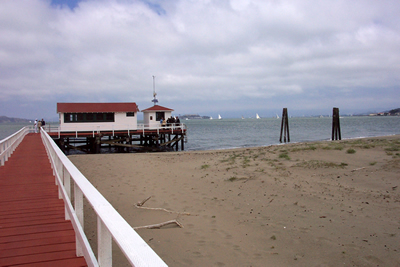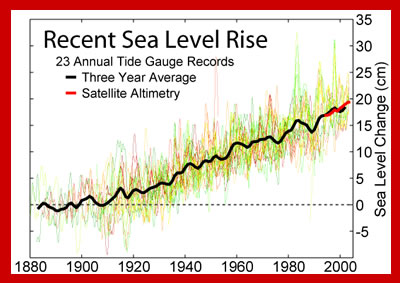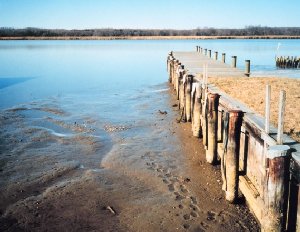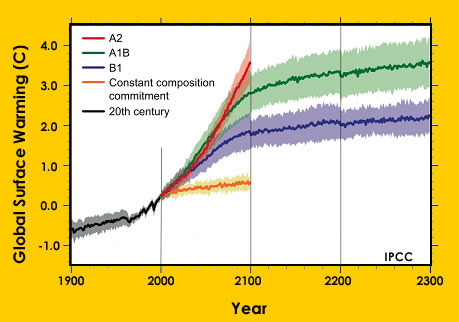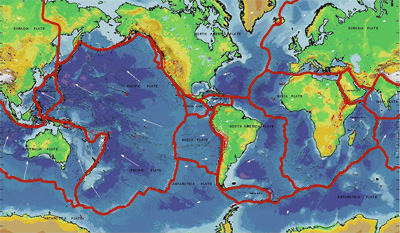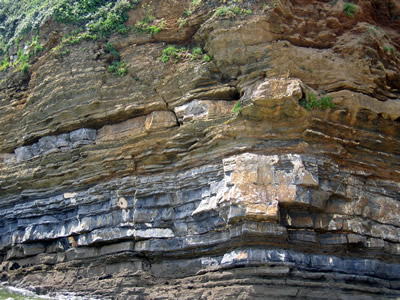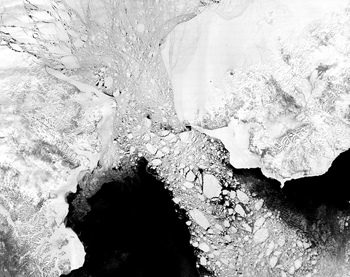Click on image for full size
Courtesy of NOAA and photographer Captain Albert E. Theberge
Sea Level
Measuring sea level, the level of the ocean surface, continually over many years allows scientists to calculate whether sea level is changing. This helps us to understand how much sea level rise is happening now because of global warming.
But measuring sea level is not easy. The sea is not level. If you tried to draw a flat line at the top of the ocean to mark the sea level you would find that there was water above the line in some places and below the line in other places. There are lots of small factors that can change the level of the ocean temporarily. Stand on a beach looking out at the ocean for a few hours and you will see the level of the ocean changing because of the tides. The ocean surface may not be a flat surface because of waves. The low atmospheric pressure of a storm can cause the ocean surface to bulge.
To even out the differences in sea level caused by waves, scientists use instruments called tide gauges. These are containers that block out the waves while measuring sea level. If the information is averaged over a year then variations like tides are evened out too. This average is called Mean Sea Level.
Satellites are also used to measure sea level. Sea surface height measurements have been recorded from satellites since 1992 by projects of NASA and the French Space Agency.
If there is a relative change in sea level, this means that the level of the ocean has changed with respect to the land. Relative changes in sea level are regional. For example, the land that New Orleans, Louisiana is built upon is sinking lower each year, a process called subsidence. Because the land is sinking, the sea level appears to be rising when it is measured relative to the land.
When the level of the oceans increases worldwide it is called a eustatic change in sea level. This is happening today as global warming melts glaciers and causes seawater to expand increasing the volume of water in the oceans. In New Orleans, the relative change in sea level is compounded by the eustatic change due to global warming. Eustatic sea level can also change over geologic time as plate tectonic motions change the shape of the oceans and how much water they can hold.


